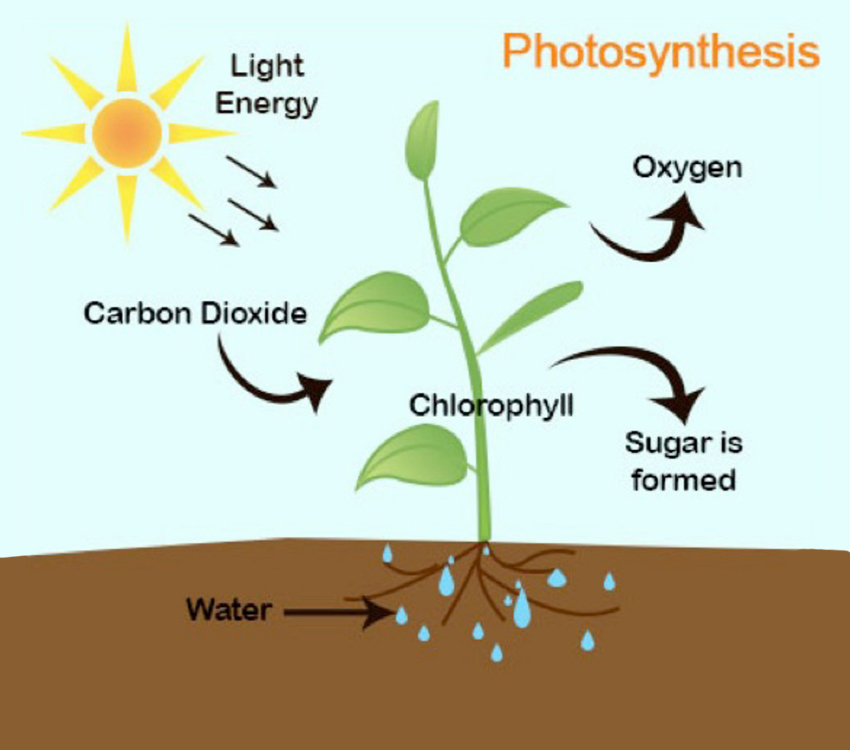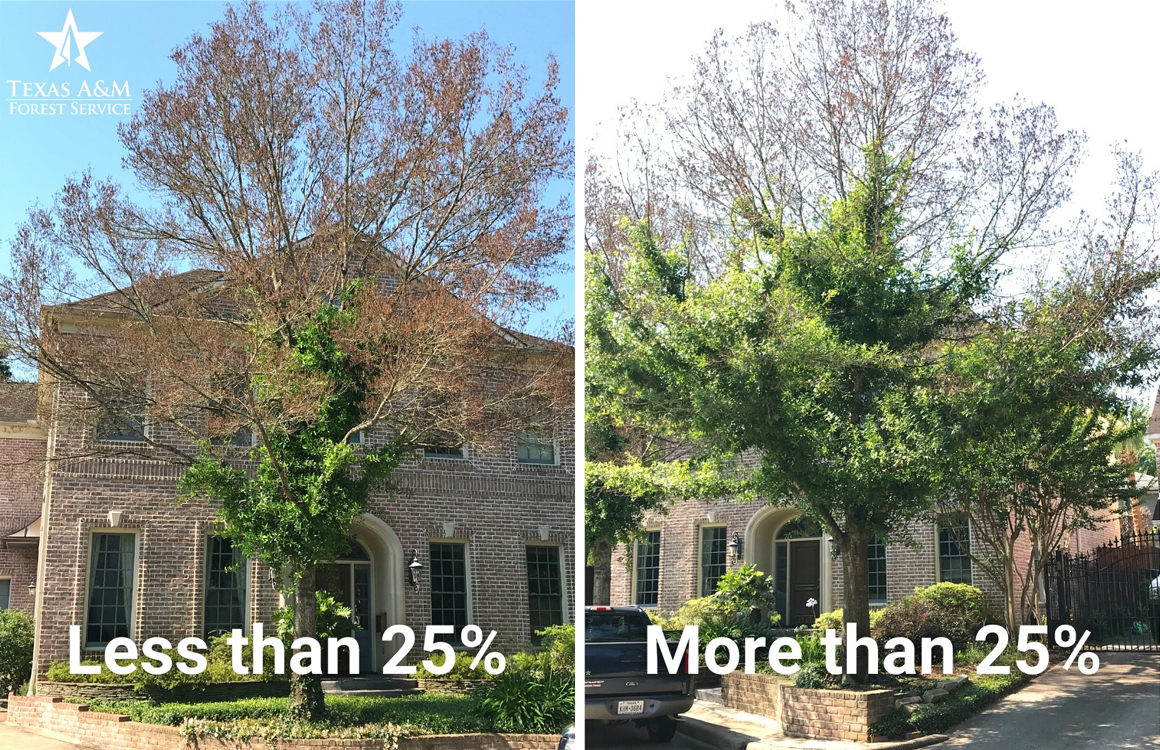Agriculture and Natural Resources Blog

Matthew Orwat
County Extension Agent – AG/NR
Email: matthew.orwat@ag.tamu.edu
How Extreme Heat Affects Trees
Article written by Master Gardener Volunteer Stephanie Suesan Smith for the Agriculture and Natural Resources division.
July 16, 2025
Hot summers, especially hot, dry summers, are very hard on trees. Urban trees are even more affected than rural trees. In addition to direct sun, roads, sidewalks, driveways, and buildings reflect sunlight onto trees. They must cool themselves to stay alive.

The Photosynthesis cycle is shut down in extreme heat. Image Credit Texas A&M 4-H.

Trees have difficulty withstanding heat when they lose most of their canopy leaves. Image Credit Texas A&M Forest Service.
Trees Sweat
Much like humans on a hot day, trees sweat water from their lenticles and stomates. Lenticles are pores on twigs, stems, and bark. Stomates are pores on leaves. Both of these open and water evaporates from them, cooling the tree. As the water evaporates from these surfaces, the tree absorbs more water through the roots.
Heat Increases Tree Metabolism
Trees break down the sugars made in photosynthesis to turn them into usable energy. Water and carbon dioxide are released by trees through their pores in this process. When a tree is heated by the sun, reflected sunlight, and hot breezes, it is forced to use more water to cool itself and less to produce energy. Trees double their respiration and water loss for every 18 degrees above 40 degrees until the temperature reaches 94 degrees, then fall off rapidly. A hot tree is a thirsty tree.
Heat Is Additive
Different sources of heat add together to increase the temperature in the tree tissues. As air temperatures rise, relative humidity falls, and soil temperature rises. Soil temperature rises slowly, but in a hot summer, can be a significant problem. As the tree tissue temperature increases, more water is used to cool the tree. Trees have less water to produce energy. When trees in temperate regions reach around 115 degrees, their tissue starts dying. Canopy temperatures can be as much as ten degrees above the air temperature.
Optimal Conditions for Trees
Most temperate region trees grow best from 70-85 degrees. At around 94 degrees, photosynthesis drops off rapidly as most water goes toward lowering the tree’s temperature. Inner branches, which are cooler, may continue to respirate, but the outer branches are trying to reduce their temperature. Eventually, the tree can’t draw up enough water from its roots to keep the tissue cool.
Hot Wind
If you have ever watched the air above asphalt when the temperatures are high, you will see waves of energy. These waves are super-heated air. They blow around trees and other plants near the asphalt, increasing the air temperature and reducing the moisture in the air. This draws more water from the plants, including trees. South facing parts of trees are most affected by the hot winds since that is the direction summer winds come from.
Symptoms of Heat Stress
When trees get too hot, their leaves and twigs wilt, then leaves start to burn along the outside edges. This burn continues if the temperature doesn’t lower. Leaves color like it was fall. Eventually, the leaves may drop as a last-ditch effort to reduce water loss from high temperatures. Twigs and branches get sunscald. Root and shoot growth reduce, then stop.
Cellular Changes
Tree cells have a double layer of lipids (fats and oils) that keep cellular contents inside. As the temperature increases, the tree increases the amount of fat in the outer layer of the cell wall. It also increases the amount of structural proteins in the cell wall to keep the membrane intact. As temperatures continue to climb, the membrane becomes more permeable and eventually breaks down, letting the cell contents out into the space between the cells. Enzymes and structural proteins break down in the heat. At this point, the byproducts of respiration are toxic, and the tree cannot get rid of them. The toxins and heat kill the tree cell. If this happens to enough cells, the tree dies.
Ways to Assist Trees During High Temperatures
When the temperature is high, you can help trees in two ways. Make sure the soil stays moist, so the tree has as much water available to use as possible. Lower the temperature in the tree. Here are some tips to help your trees.
- Increase the amount of water you give trees in hot weather and increase the frequency of waterings.
- Mulch the soil around the tree to increase water retention.
- Use structures like a pergola that will produce dappled shade. The tree can still photosynthesize but won’t get as hot.
- Use berms and structures to keep the hot air from hardscapes from swirling around trees.
- Use plants as living mulch to cover the soil and keep it cooler.
- Do not fertilize trees during a heat wave. Wait until the following spring to fertilize again.
- Be careful about using pesticides, including the wetting agents, inactive ingredients, and residue they leave on trees. Horticultural oils and some insecticidal soaps, for example, can cause death if used when it is hot.
- Do not prune green wood. Prune only to remove dead, broken, or diseased areas when it is hot.
- Design urban areas better so that trees do not get so much radiated heat. For example, increase the size of vegetation islands in parking lots so trees in them can stay cooler.
As the temperature increases and droughts increase in length and severity, trees will be more and more heat stressed. Supplemental water is crucial to their survival. Maintaining healthy trees that enter a hot period with as little stress as possible is important. Since trees are crucial to reduce the urban heat effect, we must better maintain the trees we do have to keep all of us healthy.
QUICK LINKS
LOCATIONS
EMPLOYEES
-
You must be on the network to see these links.

